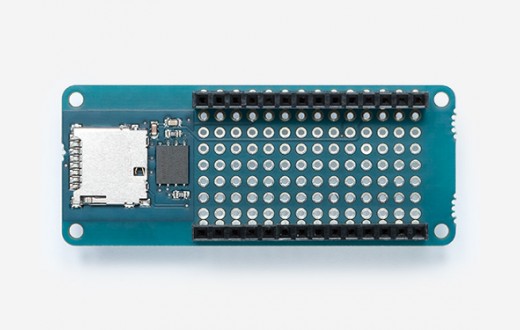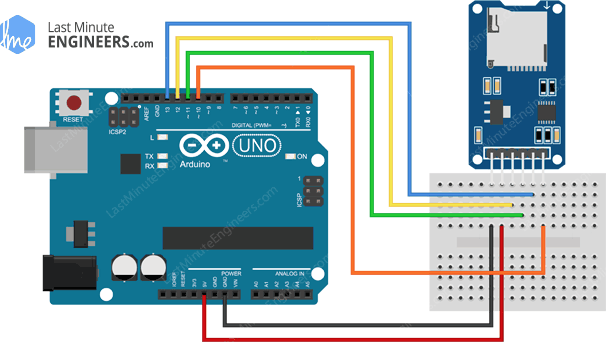

- #ARDUINO SD CARD FORMATTER HOW TO#
- #ARDUINO SD CARD FORMATTER SERIAL#
- #ARDUINO SD CARD FORMATTER PRO#
- #ARDUINO SD CARD FORMATTER CODE#
- #ARDUINO SD CARD FORMATTER PC#
The remaining part of the SD will be dedicated to the Linux file system. Specify the size of the first part of the SD card, the one you’ll use to share files with your computer. * to 10 to disable the Ethernet controller. Type 'yes' and press enter to start to formatting the SD card. * For example, with the Ethernet shield, set DISABLE_CHIP_SELECT * Set DISABLE_CHIP_SELECT to disable a second SPI device. * Default SD chip select is the SPI SS pin. * Adafruit SD shields and modules, pin 10.


* This program attempts to initialize an SD card and analyze its structure.
#ARDUINO SD CARD FORMATTER SERIAL#
This is the outcome (through the Serial monitor): SdFat version: 20160719Įdit DISABLE_CHIP_SELECT to disable another device.Įdit SD_CHIP_SELECT to change the SD chip select pin.ĬardSize: 32026.66 MB (MB = 1,000,000 bytes)įreeSpace: 32011.22 MB (MB = 1,000,000 bytes) Now, plug the SD card into the Arduino slot and try reading from the card. Finally, load the web pages that you want to deliver onto the root of the SD card. Use 8.3 file naming conventions, and format the file as a FAT32 device. However, I started by testing out the SD card through the SdInfo class that comes as an example with the SdFat library. Do NOT trust that the disk is formatted correctly after using it several times in the SD slot. My final goal is to log information every 100 ms about the temperature and pressure of my device using another one of my sensors. If (!card.I recently bought a micro SD storage shield for my arduino project, this is the link. since we're just testing if the card is working!

#ARDUINO SD CARD FORMATTER CODE#
we'll use the initialization code from the utility libraries if (dataFile) Testing SD card or Get SD Card Information Sd2Card card Ĭonst int chipSelect = 4 // 4 for Arduino boards, might be different in other non-Arduino boards. Now you can write to the file using this. The “read” function reads the file line by line, so you will have to use a while loop, until it fail to reach the end of the file. It will return false if it fails to open the file, so check dataFile before using it. The Available SD Card Module Functions Read from SD cardįirst you need top open the file first. Manner to other standard global objects like “Serial”. Including `SD.h` automatically creates a global “SD” object which can be interacted within a similar It needs to be include at the beginning of the sketch. These will form voltage dividers that will drop down the signal voltage for the SD card from 5V to around 3.3V. Additionally, resistors need to be added for certain pins. It’s pretty simple as it’s just a matter of connecting the proper Arduino pins to the correct pads on the SD card adapter. This allows the speaker to create sounds and play music. It then generates a signal and outputs it through the speaker connected to digital pin 9.
#ARDUINO SD CARD FORMATTER HOW TO#
The SD library comes with the Arduino IDE, so you don’t need to download it. In this post, we’ll see how to make an SD card reader shield for the Arduino. SD Association’s SD Formatter tool TMRpcm library (Github) How Does the Audio Player Work The Arduino in the circuit shown below loads the. Here I will show you how to use the Arduino SD library.
#ARDUINO SD CARD FORMATTER PC#
The library supports FAT16 and FAT32 file systems on standard SD cards and SDHC cards. The Arduino loads wave audio files from FAT16 or FAT32 formatted SD card and a simple PC speaker is used to amplify the audio signal generated by the Arduino microcontroller. It is built on sdfatlib by William Greiman. I haven’t tested all of these libraries, so do your research and test them before using it. The SD library allows for reading from and writing to SD cards, e.g.
#ARDUINO SD CARD FORMATTER PRO#
The default Arduino library for SD card is huge! With the example read/write sketch, when compiled it’s 13690 Bytes which is half of the available flash space on an Arduino pro mini! 1) To format the SD card, insert it in your computer. The Library uses standard SPI interface for communication, which hasSPI buses, MISO, MOSI, SCK (CLK) and a chip select signal pin, CS. The first step when using the SD card module with Arduino is formatting the SD card as FAT16 or FAT32. I have not tested this library with all the SD card modules, but I think it should work for majority of them, unless you are told by the seller that you should use a different library.


 0 kommentar(er)
0 kommentar(er)
